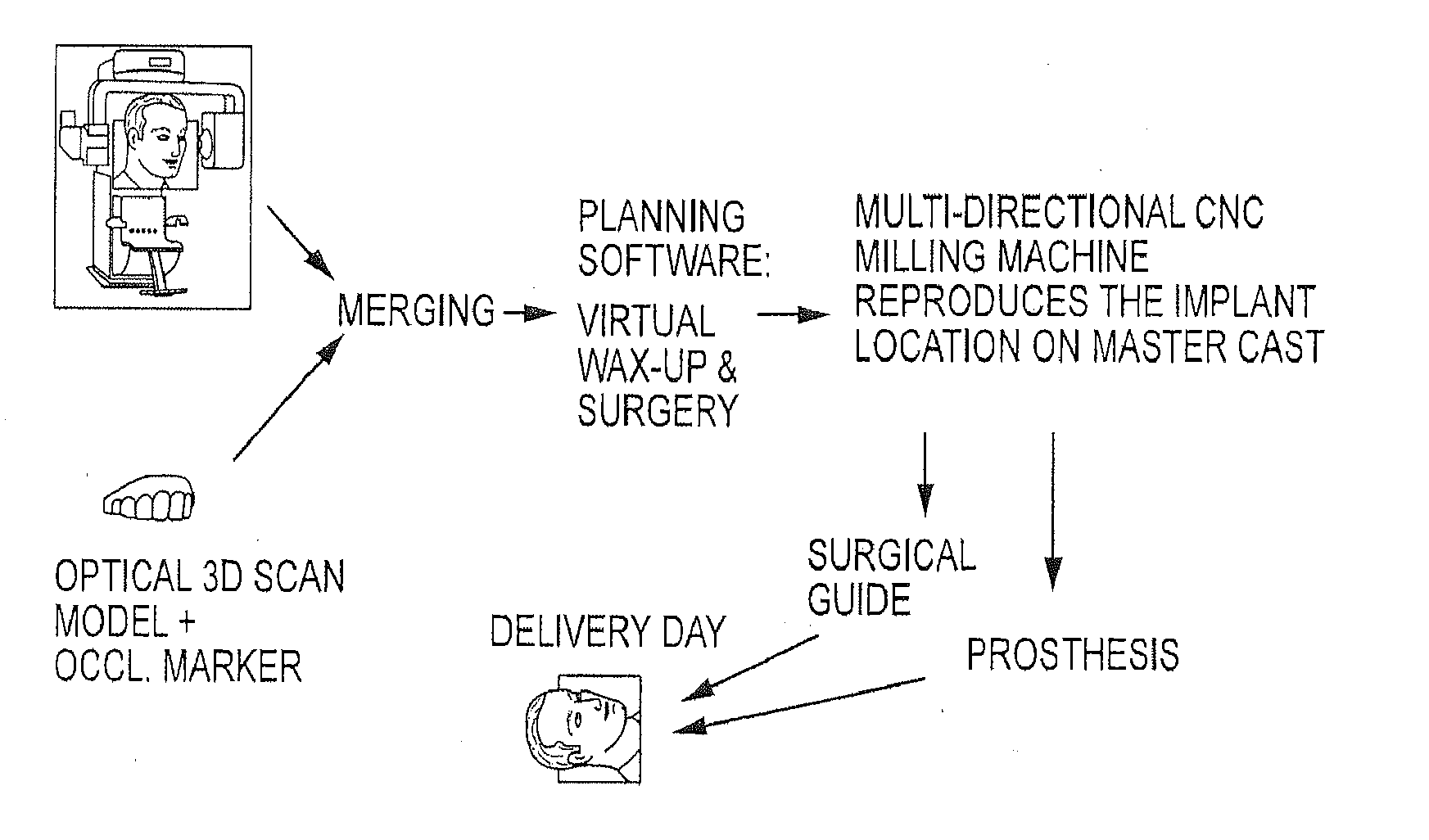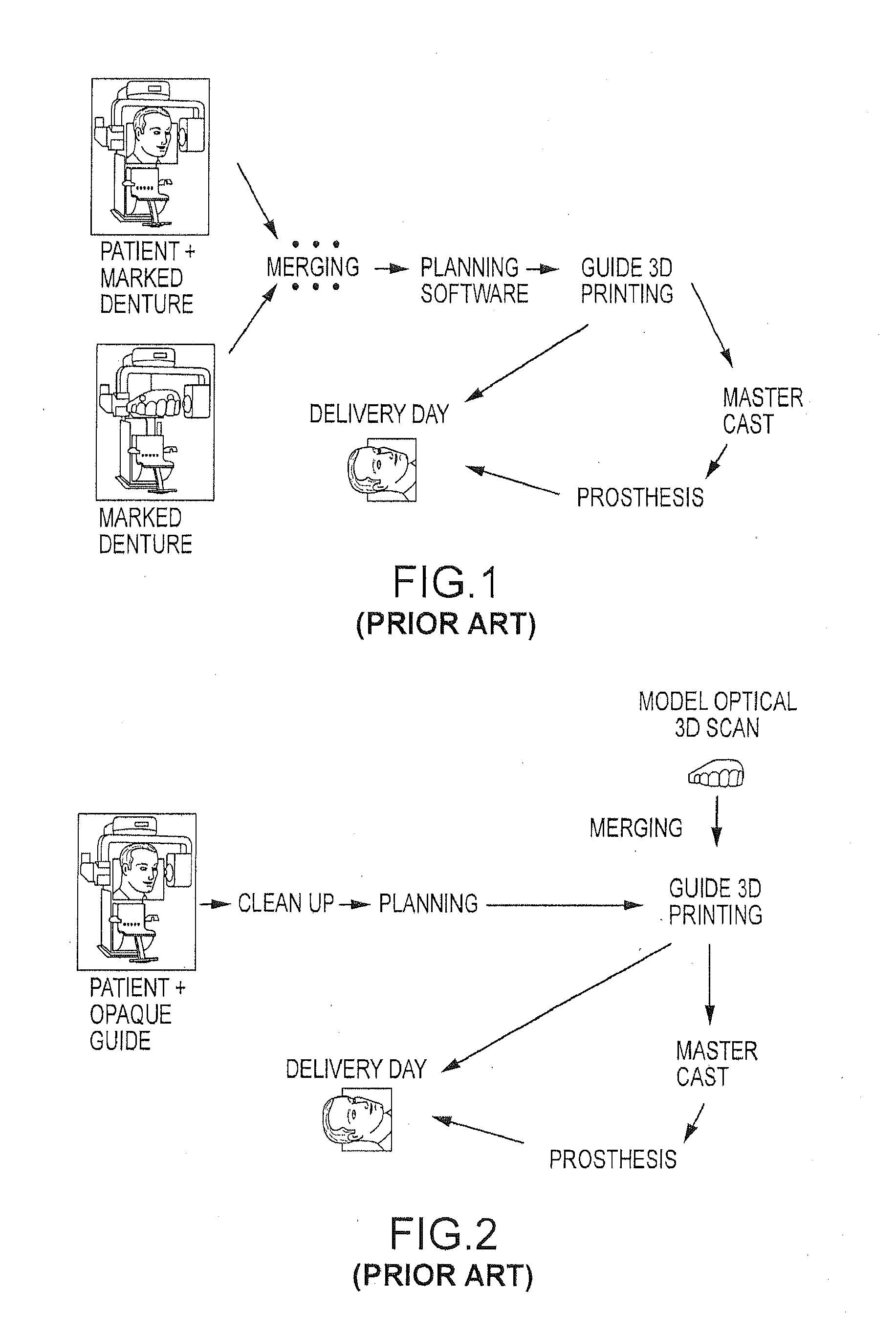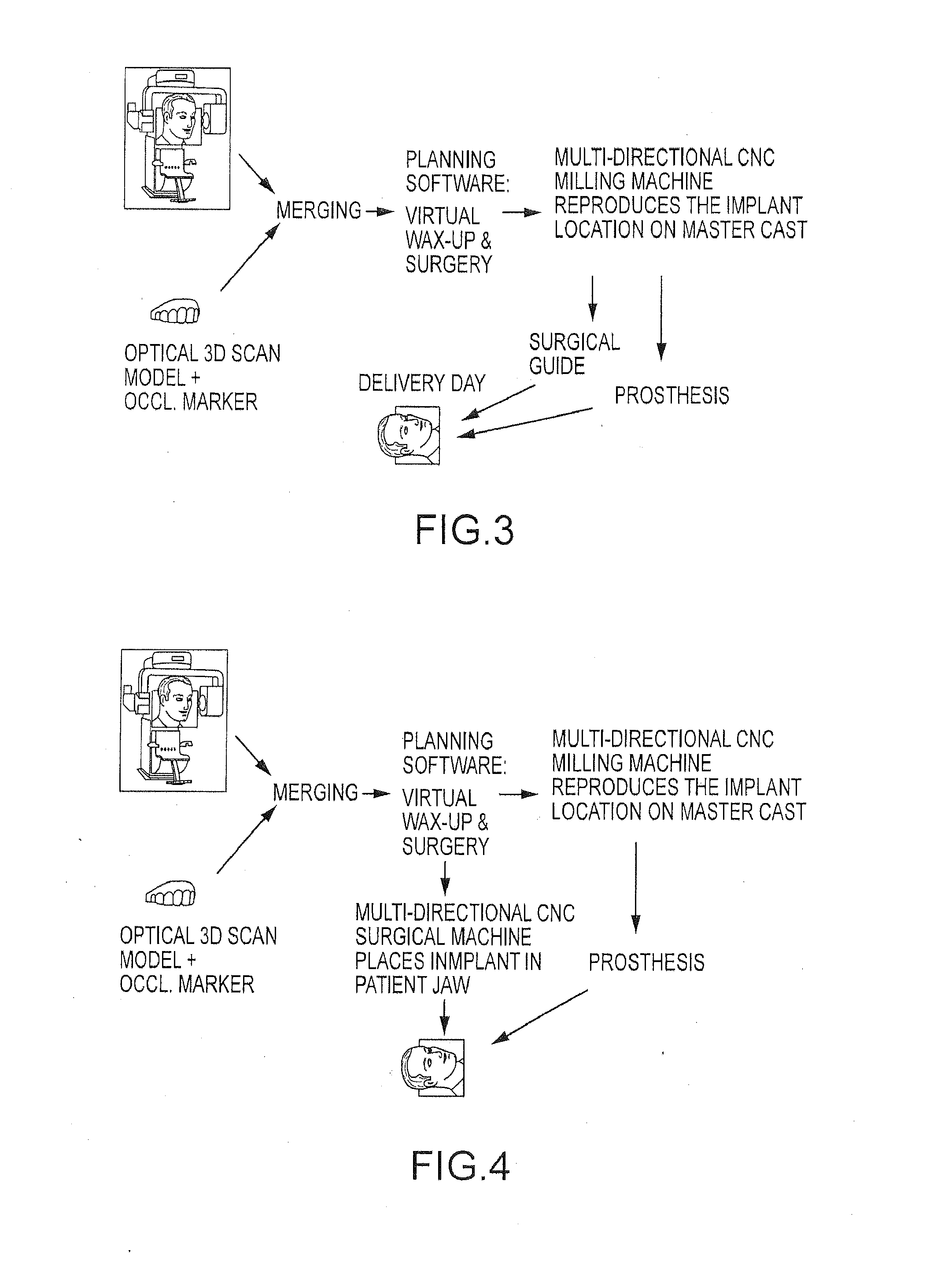Robotic surgery system
a robotic surgery and robot technology, applied in the field of robotic assisted surgery, can solve the problems of minimally invasive surgical techniques, minimal invasive techniques, instrument utilization, etc., and achieve the effect of reducing or eliminating any errors by the medical professional
- Summary
- Abstract
- Description
- Claims
- Application Information
AI Technical Summary
Benefits of technology
Problems solved by technology
Method used
Image
Examples
Embodiment Construction
[0078]The systems and methods described herein generally relate to robotic assisted surgery which allow for guidance of an apparatus by a medical professional during a surgical and / or medical procedure. One example system presented herein can be used for the design and delivery of dental prostheses. It will be understood by those of skilled in the art, that these systems and methods may be applied to a variety of surgeries that might be robotic assisted.
[0079]Conceptually, there are several phases involved in the design and delivery of dental prostheses. Generally speaking, the overall process can be broken into several interdependent phases that include, without limitation, evaluation of the patient, treatment planning, manufacture of the prosthesis, surgical procedures to prepare the patient's oral structures to receive the prosthesis, and finally, delivery of the prosthesis. In various embodiments of the systems and methods described herein surgical procedures to prepare the pati...
PUM
 Login to View More
Login to View More Abstract
Description
Claims
Application Information
 Login to View More
Login to View More - R&D
- Intellectual Property
- Life Sciences
- Materials
- Tech Scout
- Unparalleled Data Quality
- Higher Quality Content
- 60% Fewer Hallucinations
Browse by: Latest US Patents, China's latest patents, Technical Efficacy Thesaurus, Application Domain, Technology Topic, Popular Technical Reports.
© 2025 PatSnap. All rights reserved.Legal|Privacy policy|Modern Slavery Act Transparency Statement|Sitemap|About US| Contact US: help@patsnap.com



